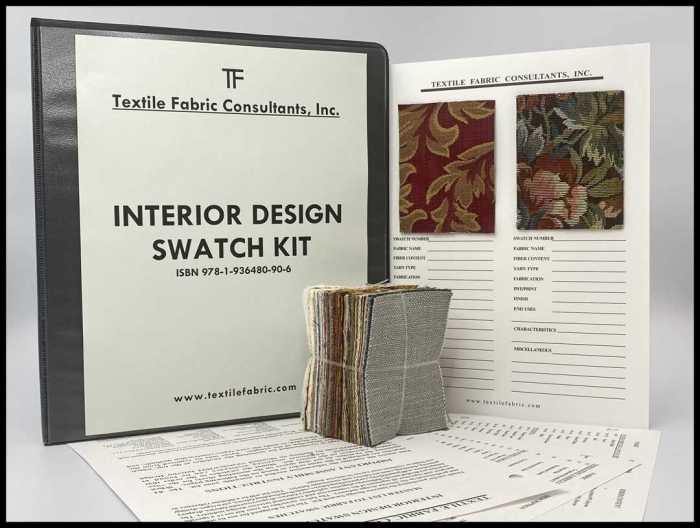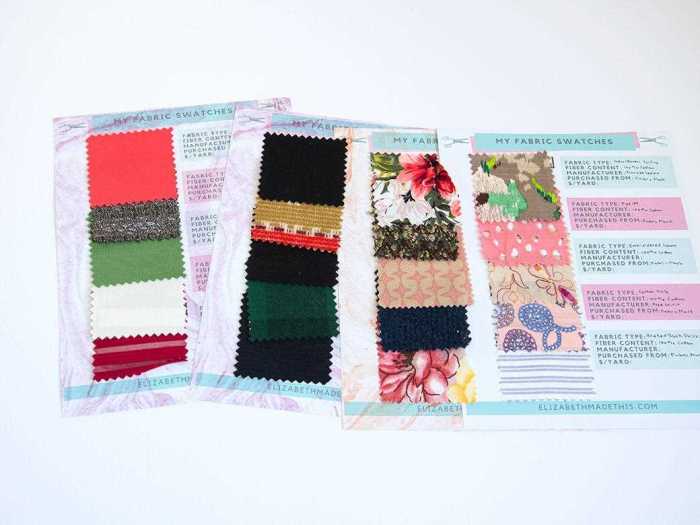Embark on a captivating journey into the realm of fabrics with the Fabric Science Swatch Kit 11th Edition. This meticulously curated collection of swatches provides a tangible resource for exploring the intricate world of textiles, empowering you to analyze, evaluate, and classify fabrics with unparalleled precision.
Through a comprehensive examination of fiber content, weave patterns, and finishing techniques, this kit unveils the secrets behind fabric characteristics. Discover the factors that influence fabric performance, delve into the applications of fabrics across diverse industries, and gain insights into the role of fabric science in textile design and innovation.
Fabric Science Swatch Kit 11th Edition: Overview

The Fabric Science Swatch Kit 11th Edition is a comprehensive collection of fabric samples designed to provide students, designers, and textile professionals with a hands-on learning experience. The kit contains over 200 swatches representing a wide range of natural and synthetic fibers, weaves, finishes, and colors.
The target audience for the Fabric Science Swatch Kit includes:
- Students in fashion design, textile design, and related fields
- Designers and product developers in the fashion and home décor industries
- Textile professionals involved in fabric sourcing, quality control, and production
The kit is intended for use in various applications, including:
- Learning about different fabric types and their properties
- Developing an understanding of fabric construction and finishing techniques
- Identifying and classifying fabrics based on their characteristics
- Evaluating fabric performance and suitability for different applications
Swatch Analysis and Evaluation: Fabric Science Swatch Kit 11th Edition
To effectively analyze and evaluate the fabric swatches included in the Fabric Science Swatch Kit, it is important to consider the following criteria:
- Fiber content: Identify the type of fibers used in the fabric, such as natural fibers (e.g., cotton, wool, silk) or synthetic fibers (e.g., polyester, nylon, spandex).
- Weave: Examine the way the fibers are interlaced to create the fabric’s structure. Common weaves include plain weave, twill weave, and satin weave.
- Finish: Note any special finishes applied to the fabric, such as dyeing, printing, or coating. Finishes can affect the fabric’s appearance, texture, and performance.
By carefully observing and evaluating these characteristics, you can gain a comprehensive understanding of each fabric’s properties and suitability for different applications.
Fabric Classification and Identification

Fabrics can be classified into different categories based on their properties. Common methods of fabric classification include:
- Fiber analysis: Identifying the type of fibers used in the fabric through microscopic examination or chemical testing.
- Microscopy: Using a microscope to examine the fabric’s structure, including the fiber arrangement, weave pattern, and any special finishes.
Accurate fabric identification is crucial in textile applications as it helps determine the fabric’s performance, care requirements, and suitability for specific uses.
Fabric Properties and Performance
Fabrics exhibit a range of physical and mechanical properties that influence their performance in different applications. These properties include:
- Strength: The fabric’s resistance to tearing, breaking, or stretching.
- Drape: The fabric’s ability to fall and flow gracefully.
- Wrinkle resistance: The fabric’s ability to resist creasing or wrinkling.
The factors that influence fabric performance include:
- Fiber type: The properties of the fibers used in the fabric.
- Construction: The weave pattern and other structural elements of the fabric.
- Finishing: The special treatments applied to the fabric to enhance its performance or appearance.
Understanding fabric properties is essential for selecting the right fabric for specific applications.
Fabric Care and Maintenance

Proper care and maintenance are essential to preserve fabric quality and extend its lifespan. Different fabrics require specific care methods, depending on their fiber content and construction. Common care instructions include:
- Washing: Instructions on the appropriate water temperature, detergent type, and washing machine settings.
- Drying: Instructions on the appropriate dryer temperature and cycle, or whether air drying is recommended.
- Ironing: Instructions on the appropriate iron temperature and any special ironing techniques.
Following proper care instructions helps prevent damage to the fabric and ensures its longevity.
Textile Applications and Design

Fabrics are used in a wide range of applications, including:
- Fashion: Clothing, accessories, and footwear.
- Home décor: Curtains, upholstery, and bedding.
- Industrial textiles: Technical fabrics used in industries such as automotive, medical, and construction.
Fabric science plays a vital role in the design and development of new textiles. By understanding the properties and performance of different fabrics, designers can create textiles that meet the specific requirements of their intended applications.
User Queries
What is the purpose of the Fabric Science Swatch Kit 11th Edition?
The Fabric Science Swatch Kit 11th Edition provides a comprehensive collection of fabric swatches for analysis, evaluation, and classification, empowering users to understand fabric characteristics, performance, and applications.
Who is the target audience for this kit?
The kit is designed for students, designers, textile professionals, and anyone interested in gaining a deeper understanding of fabrics.
What criteria are used to analyze and evaluate fabric swatches?
Fabric swatches are analyzed and evaluated based on factors such as fiber content, weave, finish, strength, drape, wrinkle resistance, and other physical and mechanical properties.